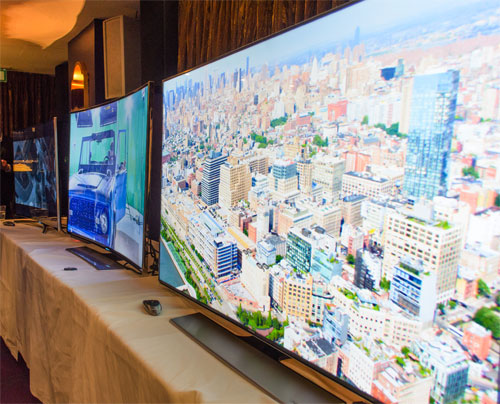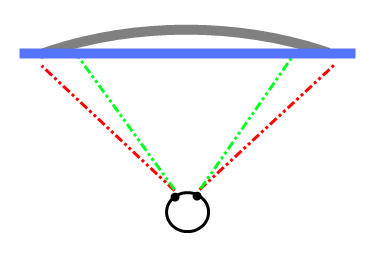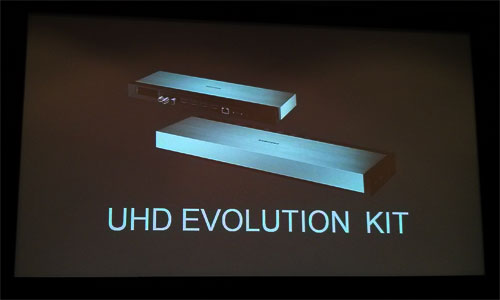Earlier this month, we attended a technical briefing hosted by Samsung in London, where the Korean manufacturer talked about their upcoming curved and UHD (ultra high-definition) TVs for 2014.

Like widescreen and stereoscopy, concave screen is not a 21st-century concept. It was first conceived more than half a century ago, and has since become standard in cinemas/theatres throughout the globe. Its primary advantage is increased Field of View (FOV), but it also helps to reduce luminance and sharpness degradation towards the extreme sides of the screen when a single projector is used. Getting concave screen into people’s living rooms however proved to be technologically impossible until now. It can be done with projectors, but the screen would have to be fixed to the wall permanently. Something that most people would oppose in the living room; and constructing a private cinema/ theatre is probably not something that the average consumer would be willing to undertake.
Bending LCD to form a curved panel not an easy task, as LCD is composed of numerous materials (including glass) held together by metallic frame. Warping or applying localised pressure to the panel causes all sorts of visual artefacts as most people are no doubt aware (particularly laptop owners). It’s even more challenging when the panel is edge-lit (as opposed to backlit). So what Samsung managed to achieve is nothing short of groundbreaking, especially considering the size of the panels.
After a theory-heavy presentation, Samsung gave us a chance to see their curved displays in action. The engineering team set up two TVs – one curved and the other flat – and placed them side by side. To our surprise, not only did the curved model seem more immersive, it also had noticeably wider viewing angles. The reason could be due to the curvature radius of 4200mm chosen by Samsung, which does seem like the ideal sweet spot. So if you’re wondering if bendy tellies are ideal for the living room, the answer is a resounding yes. We tried our best to capture it using our DSLR, but our picture does what we saw very little justice.

In addition to better immersion and viewing angles, a concave format could also address one of VA LCD’s longstanding limitations. Unlike IPS (In-Plane Switching) and PLS LCDs, a VA (Vertical Alignment) panel has slightly narrower viewing angle. It has improved over the years, but it won’t be able to match IPS and PLS while maintaining deep black levels due to inherent limitation of VA technology. As a result, when a VA LCD TV is viewed from recommended sitting distances, the sides of the screen may exhibit contrast, colour and gamma shifts especially during dark scenes. The obvious solution is to sit further away, but doing so results in resolution loss. By curving the screen, the edges can be brought closer and the pixels would face the audience (as illustrated below). To combat yellow tinting, Samsung’s engineers have modified the pixel structure, which did seem effective during the demo.

Finally, Samsung has launched this year’s UHD evolution kit in the form of the One Connect Box, which can be upgraded in the future if needed. The company also introduced 192-point colour adjustment via PurColour, as well as combined colour mapping and panel gamut mapping into a single process to reduce errors, which we’ve been looking forward to for a long time.

From what we’ve seen during the tech demo, we have high hopes for curved screens, even though there are still a number of questions to be answered (for example, geometry distortion). But regardless of the advantages offered by curved televisions, its success in the home ultimately rests in the hands of consumers.